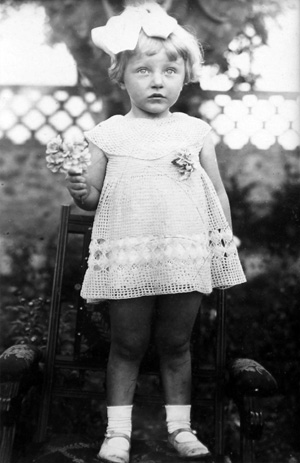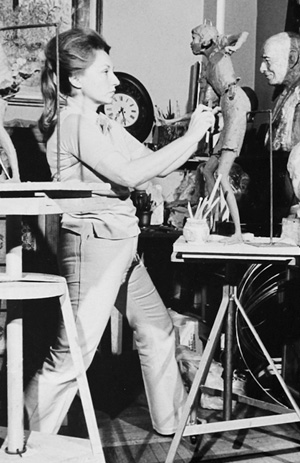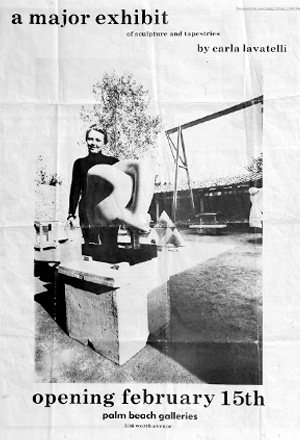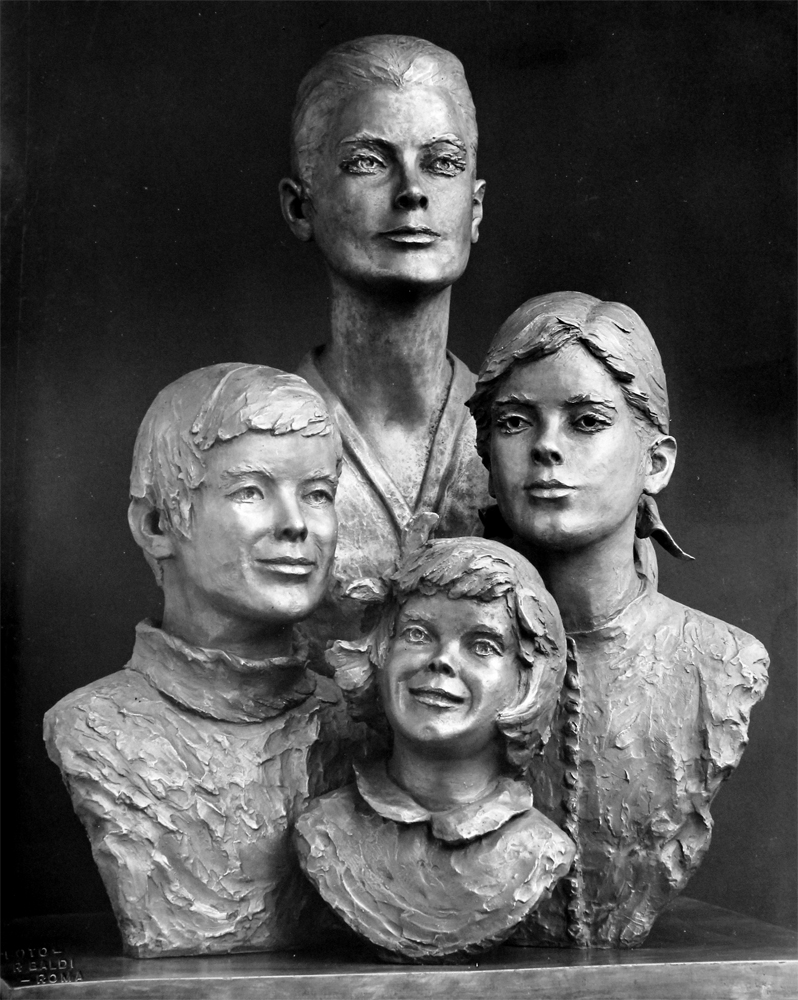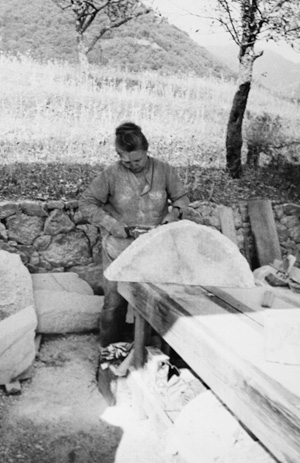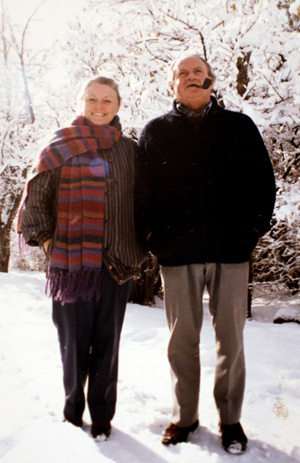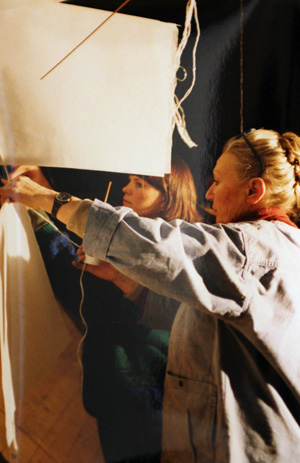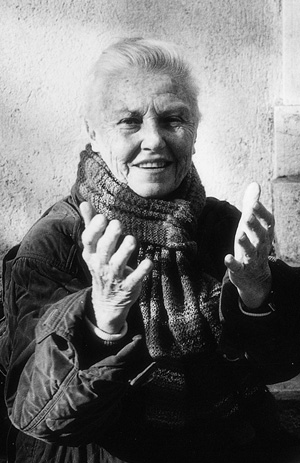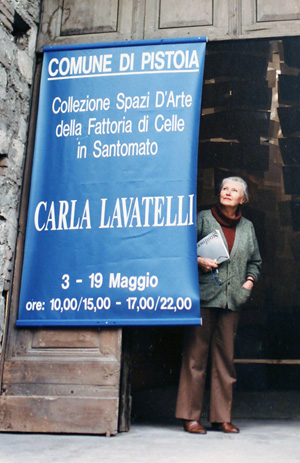
During 1995, she received commissions for tapestry and water in Mougins, France, and a Happening for a prayer at the 16th Century Monument in Pistoia. She begins working at a furnace in the South of France to research and develop a 52 color palette for ceramic sculptures. The first Happening in Italy was on May 3, 1991, in the church of San Giovanni Bartolomeo. It had consisted of paper, cord, reed and the Japanese bamboo flute: The Shakuhachi, by Yoshikazu Iwamoto. It was to inaugurate the Spring/Summer Art Season for the City of Pistoia. The event is sponsored by the Department of Cultural Affairs and Giuliano Gori of the Art Spaces Collection in Celle of Santomato.
She then works on her project “Happening For Peace.” It was created to celebrate the 50th Anniversary of United Nations, in the Winter Garden of the World Financial Center in New York City and in Grace Cathedral in San Francisco. The event to stimulate peace and togetherness was scheduled to take place in 1995. The project received the official endorsement of the UN on December 3, 1992. An installation, by four photographers, about her life and work was inaugurated in June,1993 at the Picasso Museum of Photography in Mougins, France. The photographers were Emett Bright, Filippo Conforti, Joel Greenberg, and Carlo Lavatelli Herrmann. The film “Happening For A Prayer- Pistoia, 1991” and “Festa-New York City, 1986” are shown daily. On September 27, 1993, Carla had surgery for cancer.
She receives a commission for “Urban Project,” a plaza at Saint Jacques le Majeur, Mougins, France. Inaugurated on May 13, 1995, the plaza is given the name of her project, “Place Du Banc Des Amis.” She receives a gold medal for outstanding public contribution to the City of Mougins. While her proposal for “Happening For Peace” in Paris is pending, she writes, produces books, collages, drawings and small carvings. The installation of The United Nations Project For Peace takes place at the Pecci Museum of Contemporary Art in June, 1995. After that, the installation of “Fragile Perishable Environment” is shown at the Renoir Museum in October, 1995. Carla continued to search for a place and sponsors to help realize “The Fountain With A Permanent Shadow.” The project “The Chapel For All Religions,” first proposed in 1970, is still pending. The ceramic free standing murals, “Woods In Bloom And Waterfalls,” initiated as of 1990, in the South of France, is also still pending. She has works in progress for exhibitions in New York, Cannes, and Antibes for a traveling retrospective of her work.
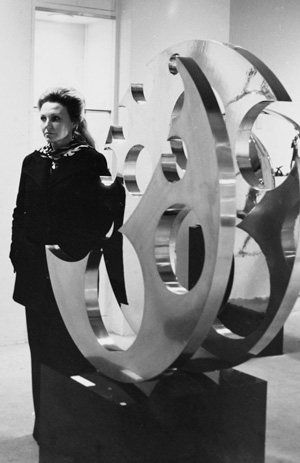
The sculpture “1-1/2” is dedicated by President Ford in 1975, but is vandalized on the campus of Stanford University, California, in March of 1995. In February and March of 1996, the project with Leo Castelli, which was scheduled for inauguration in Spring of 1996, is canceled by his new wife. Carla proceeded to writes a three act comedy, “Leo and the Tarantula,” in June. She then leaves New York after a 35-year period and moves the studio at 140 Thompson street in SoHo to the Working Place & Sculpture Garden in Tuscany. The Wood Line, a 70 foot long sitespecific sculpture, is purchased with the studio by an Australian architect. In October, the 12th Annual event in New York City, “Looking at Life,” at the Cathedral of St. John the Divine and the blessing of the animals was broadcast by Channel 13 WNET, NYC. Her catalog and poster were published by Abba International. In December, serious family problems were causing illness, yet again. "Chi di spada ferisce, di spada perisce" Two of her sculptures, “Interlocking Forms” in bronze and “Growing High” in marble, are purchased by Mary Mochari of the Kasser Foundation in the USA. The flood in Tuscany causes severe damages, and a period of illness. She presents a project for the garden and windows of Notre Dame de Vie in Mougins, France. She works on restoration of her bronze & stainless steel sculpture “1½.”
